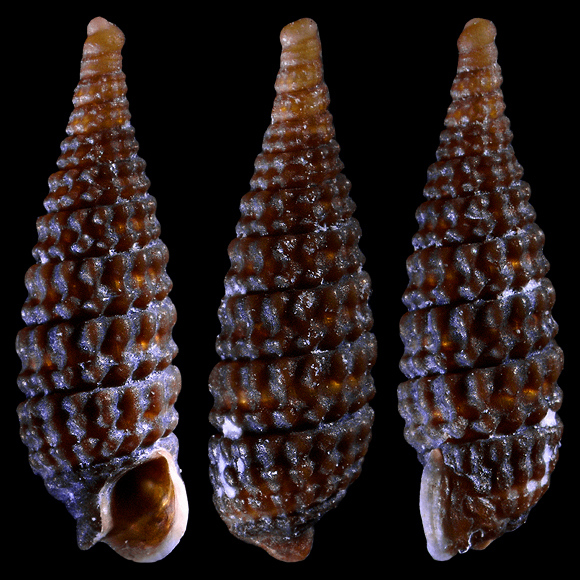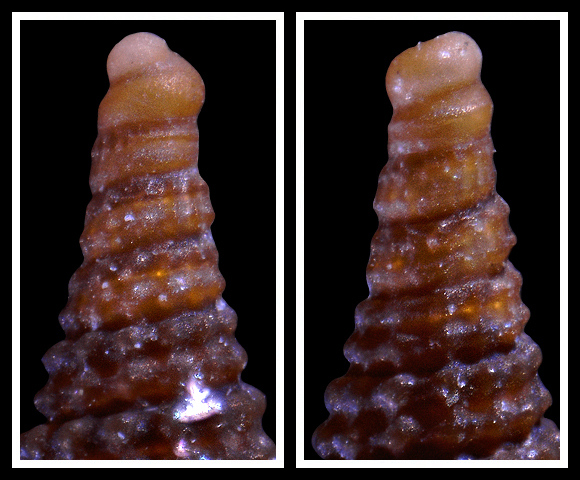
Predator on sessile preys in the infralittoral and, at least, upper circalittoral. Protonym: Cerithium concatenatum.
Shell small, solid, pupoid. « On the first teleoconch whorl, the abapical cord is markedly more prominent than the other one and overhangs the suture of the following whorl; the axial ribs are there comparatively more apparent and more crowded than on the second teleoconch whorl. On the following whorls, the adapical cord progressively takes over as the thickest one. On the last whorl, the beads of the adapical cord become elongated in the axial direction and, on the section preceding the aperture of adult specimens, this cord tends to split and form two contiguous rows of beads, which become still more narrow and elongate. The abapical part of the body whorl bears one thick beaded cord in prolongation of the suture and another one, flatter and not distinctly beaded, in the intervening space between this and the siphonal canal. Aperture oval, with a broad and short siphonal canal and a smaller channel at the opposite end. Adult shells have a rounded, but not thickened edge to the outer lip. Colour brown, grading to paler or even white towards the apical whorls. » – Bouchet, Gofas & Warén: “Notes on Mediterranean Dizoniopsis (Gastropoda: Cerithiopsidae), with the description of two new species”, Iberus vol.28(2), Barcelona 2010, p.55-56.
55m deep, northeastern coast of Aegina island, Saronic gulf, SE. Greece. 4,75mm.
